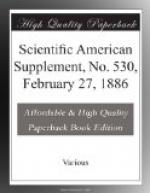Fig. 1 represents a cotton fiber, and 2, 3, 4, 5 those of flax, as they appear under the acid treatment. Every textile amylaceous fiber is convertible into these forms, more or less, by strong sulphuric acid. The fibers of cotton, flax, and ramie are examples of amylaceous cellulose, that is to say, these fibers are converted into starchy matter by treatment with the last-named acid. Therefore combinations of these fibers in any composition of non-amylaceous fiber (ligneous or woody fiber) will be dissolved, leaving the latter unharmed; the woody fibers remaining will prove suitable objects for examination under the microscope.
COTTON MIXED WITH LINEN.
Again, it might be important to know whether a certain pulp or composition contained flax in combination with cotton. The composition might be of such a well-digested character as to destroy all appearance of normal form, that is to say, the “twisted ribbon” character of cotton, as well as that of the cylindrical and jointed characteristic of flax, might be lost to ordinary view. In this case make a watery solution of the pulp, spread it out thinly on a glass slide 3 inches by one, draw off any superfluous water, then add one or two drops of a strong solution of chromic acid to the preparation, and place over it a glass cover; when viewed by the microscope, any portion of the flax joints present will appear of a dark brown color; a solution of iodine has a similar effect. The brown portions of the joints are nitrogenous in character; cotton fibers are devoid of nitrogen.
[Illustration: Figs. 1, 2, 3, 4, 5.]
EXPERIMENTS WITH FLAX.
A chemist of the Department of Agriculture had once occasion to make experiments with flax fibers, his object being to make them chemically pure; and to this end he treated them with excess of bleaching agents, thus rendering them of a beautiful white, silky appearance, to the naked eye; but when I examined them under the microscope, I found the brown nitrogenous matter of the joints still present, and on using the chromic acid test, they became deeply stained. A chemical solution of flax therefore would prove for some purposes undesirable, owing to the presence of this ligneous matter. A chemical solution of cotton which is destitute of ligneous matter will give a chemically pure solution. Cotton is therefore better adapted than flax for collodion compounds.




